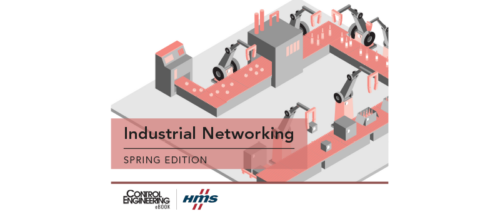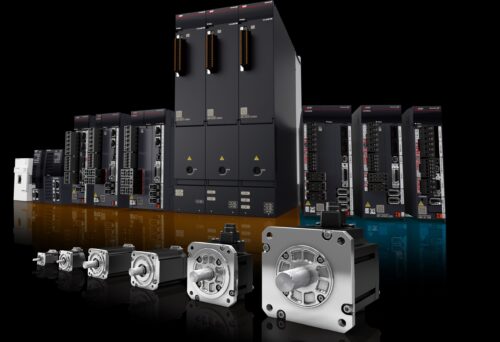How IoT and automation will transform how industries function
Technology Update: Internet of Things (IoT) is changing the future of automation engineering and manufacturing. Learn the five areas driving IoT and why they’re important.
Development of the Internet of things (IoT) is considered as one of the major events in modern day industrial revolution. Digital transformation has become inevitable for majority of organizations wanting to achieve better productivity and management of processes and assets.
As companies strive to earn larger market shares, manufacturers and engineers face the challenge of creating innovative machines and systems. Industrial Internet of Things (IIoT) assist them in providing high-speed and efficient systems in running flexible production processes at affordable prices. Another basic challenge is the integration of these advanced systems for seamless applications. Design engineers and original equipment manufacturers (OEMs) are using research and development (R&D) to develop low cost solutions for the evolving demands.
Impact of IoT on automation
The IoT has entered the next stage of business, where the focus is primarily on integration and convergence across industrial verticals, compared to the prior initiation of novel projects. Businesses are more focused on the value and goals than versatility of the connected devices. Advancements taking place in IoT connected devices, platforms, software, systems, apps, and connectivity among others is the key factor taken into consideration. It is imperative for the manufacturers to possess or develop instruments and equipment with flexibility in design, movement, reusability, and interconnectivity. Manufacturers increasingly rely on incorporation of subsystems and modular components that can help improve the efficiency and eventually reduce manufacturing costs.
IoT-enhanced manufacturing
With applications in healthcare, home automation, and building and construction, IoT has become ubiquitous. The major challenge for manufacturers is to develop smooth communications to enhance capacity and flexibility of actuators, analyzers, and robotics. IoT-enabled industrial automation can offer integration of various commercial technologies across major industrial applications, such as with programmable logic controllers (PLCs).
Management of the overwhelming amounts of data is a primary digitization concern. Analysis and distribution of collected information and data is essential for OEMs to derive predictive models. These models can assist end-users to reduce often costly unplanned downtime. Along with the use of cloud, manufacturers need to program an interface to read the data and present the most relevant information for the end user. In this way, engineers can collaborate with automation suppliers without prior knowledge of big data.
How IIoT is transforming manufacturing?
Increasing cost-effectiveness of cloud technologies, IoT, operations and maintenance personnel are turning to IIoT by embedding more intelligent controls, sensors, and smart switches. Industries need systems that can do predictive analysis and determine the projected time of servicing. Researchers find that such abilities are capable of significantly reducing overall maintenance costs of organizations and can reduce breakdowns.
Organizations are taking keen interest in integrating the three vital elements of business: machinery, robotics, and humanpower. Traditional manufacturers are adopting the advanced systems to reduce operational efforts and manufacturing costs.
Increasing adoption of supervisory control and data acquisition (SCADA) systems has been a sign of growth for traditional manufacturers. Traditional SCADA systems cannot communicate with operations and logistics. This is where industrial IoT becomes invaluable for businesses by moving data gathered beyond SCADA. IIoT can link all aspects of manufacturing, including delivery, operations, sales, and inventory. IIoT connections make the machines more autonomous and most importantly, they can coexist with SCADA. This is expected to boost integration and eventually replace or integrate data acquisition systems into the IoT.
Five areas driving IoT
Global IIoT initiatives will unlock approximately $933.62 billion by 2025, according to Grand View Research. The need for real-time information remains the primary market driver, and innovation is expected to propel IIoT demand. Most companies focus on databases to detect, categorize, and optimize processes. Emerging regions also are expected to witness impressive growth in coming years with increased industrialization and adoption of IoT across all walks of life. Five major IIoT trends follow.
1. Security
Researchers expect security to be the primary IoT and IIoT concern. Threats like cyberattacks, data privacy, and data security threats from public and private networks and devices are anticipated to be among major risk factors for industry. Major challenges ahead of the organizations is to keep IIoT devices updated and secured throughout their lifecycles. The key is to enable security patches and system updates for devices that might sometimes have weak security systems and passwords.
2. Data intelligence
Increasing efforts to improve digital literacy is one major trend expected to emerge in near future, across the board. Organizations are focused on investing in systems and programs to ensure the right kind of data is collected. Preference for data quality over data quantity is something that manufacturing organizations are careful about. Companies are likely to hire data engineers and data scientists to figure out a way to gauge the capabilities of major cloud service providers with the use of advanced tools.
3. Smart cities
Rising demand for connected infrastructure, autonomous technologies, and high precision location services can ensure rapid growth of IoT and for smart cities. This factor is anticipated to boost the adoption of IoT and IIoT and is poised to improve infrastructure services and applications. Integration of these systems can boost accuracy of services, traffic lights, parking systems, security systems, and so on.
4. Business collaborations
While innovations like flexible machines and system integration continue, businesses vigorously seek innovation. Most companies are engaging in business collaborations and cooperative partnerships. Mergers and acquisitions (M&A) are expected to help organizations develop advanced capabilities and work faster and smarter. Researchers suggest M&A can assist in bringing analytics and digital capabilities under one roof and provide a strong competitive edge to the businesses.
5. Advanced applications
Development of advanced applications, predictive maintenance, software upgrades, next generation manufacturing, blockchain (an internet ledger that can be accessed by all parties involved in transactions and that serves as a depository of transactions among involved parties), and autonomous data centers are also expected to positively influence the manufacturing and automation engineering industries for years to come.
Lack of data visibility across most existing businesses remains a hinderance. Data visibility is one of the vital IIoT requirements. Another problem concerns system upgrade costs. Data gathering and analysis and system upgrades can be extremely expensive and also can disrupt routine operations. Researchers suggest that resolving these challenges can help IIoT reach its potential.
Rutuja Jathar is a technical writer/editor with Grand View Research Inc. Edited by Mark T. Hoske, content manager, Control Engineering, CFE Media, mhoske@cfemedia.com.
KEYWORDS: IIoT, Big Data
IIoT helps with manufacturing efficiencies.
IIoT and automation helps security, data intelligence, and maintenance.
Data visibility will augment decisions.
CONSIDER THIS
How are IIoT investments accelerating your automation efficiencies?
Do you have experience and expertise with the topics mentioned in this content? You should consider contributing to our CFE Media editorial team and getting the recognition you and your company deserve. Click here to start this process.



